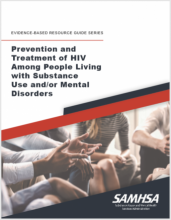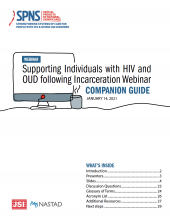
State health departments must dedicate staff and time to ensure a consistent approach to HIV and opioid use disorder (OUD) service delivery. For some states, this means creating new staff roles.



State health departments must dedicate staff and time to ensure a consistent approach to HIV and opioid use disorder (OUD) service delivery. For some states, this means creating new staff roles.
Data partnerships help coordinate HIV and opioid use disorder (OUD) services across state programs. These relationships can help state agencies identify service overlap and gaps, identify common goals, and initiate collaboration.
Substance Abuse and Mental Health Services Administration (SAMHSA)
Articles in this supplement focus on the global opioid crisis, including coverage of harm reduction approaches, health justice promotion, and lessons learned.
This month, the Department of Health and Human Services (HHS), through the Substance Abuse and Mental Health Services Administration (SAMHSA), announced three funding opportunities to strengthen mental health and substance use systems and services for people with or affected by HIV:
Building on last month’s episode about providing HIV and substance use care for people who are incarcerated, this month the Boston Medical Center Team talks with Dr.
This guide offers considerations for how state agency staff can develop and maintain an accessible, HIV and opioid use disorder (OUD) service inventory. This guide can be used by state agency HIV and OUD staff to:
In response to an increased risk of overdose, several communities in the U.S. are considering establishing spaces for people to use substances safely.
The COVID-19 pandemic resulted in federal policy changes related to telehealth use that allowed states to maximize access to medications for opioid use disorder (MOUD) through telehealth.